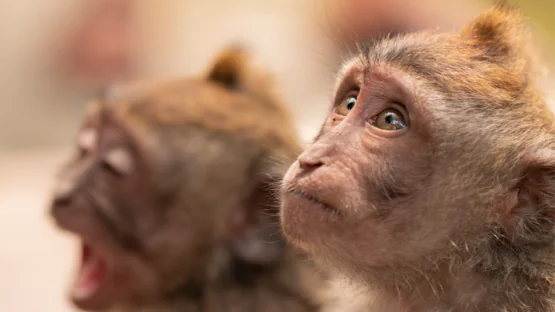In one of the first studies of its kind, the popular senolytic combination, administered systematically for six months, produced several health benefits in these animals. Some effects were augmented by caloric restriction [1].
Coup de grâce for cells
The combination of the drug dasatinib and the flavonoid quercetin, also known as D+Q, is one of the most popular senolytics (compounds that induce death in senescent cells). It has been the subject of numerous preclinical and some clinical trials, showing a lot of promise [2]. However, there is limited data on safety and efficacy of long-term systemic administration of D+Q in humans or humanlike animal models.

Read More
This new study attempts to fill the gap. The scientists treated 16 middle-aged cynomolgus macaques, males and females, with D+Q for six months. The drug was administered orally for two consecutive days once per month. For the last month, the animals were also subjected to mild caloric restriction (10%) to reveal any potential synergistic effects, as caloric restriction itself is a powerful anti-aging therapy [3].
Reduced senescence
As expected, the treatment led to a significant reduction in cellular senescence that was measured in subcutaneous tissue three months after the beginning of the experiment. In parallel, the markers of apoptosis (cellular death) increased, indicating effective senolysis.

Interestingly, three diabetic monkeys were included in each group. In the study group, they showed the greatest senolysis, about three times more than their non-diabetic counterparts. While the number of diabetic subjects was too low for statistical analysis, the trend suggests that diabetic individuals might benefit more from a senolytic treatment.
Less inflammation and other benefits
The D+Q treatment also produced some anti-inflammatory effects, with significant or borderline significant shifts in blood cell composition. Caloric restriction further reduced inflammation, and a mild synergy was observed between the two treatments. The researchers hypothesize that somewhat ambiguous results might be explained by the activity of macrophages clearing away dying senescent cells.
One of the highly conserved features of aging is the degradation of the intestinal barrier, which leads to microbial and other pathogens entering the bloodstream. The D+Q treatment led to a significant improvement in markers of intestinal barrier integrity. This effect was augmented by caloric restriction. No significant changes in microbiome composition were observed.
Kidney function seemed to benefit from the senolytic treatment as well. Blood urea nitrogen (BUN), a common marker of kidney health, was significantly improved. This time, however, caloric restriction did not add any benefits.
On the metabolic front, D+Q by themselves failed to produce any significant benefits, although there was a trend towards a lower abdominal to subcutaneous fat ratio; abdominal fat is thought to be more unhealthy. Caloric restriction, on the other hand, expectedly shined, with highly significant reductions in body weight, waist circumference, and increased percentage of lean mass. It also reduced triglycerides and fasting blood glucose. However, an interesting synergistic effect between the two treatments was observed in improving hemoglobin A1C (HbA1c), an important metric of average glucose levels over a time period.
Given the outcomes of this study, we believe that these data provide preliminary evidence to support safe implementation of a human clinical trial, perhaps focused on diabetic kidney disease in mid-to-late-age adults. We believe that intermittent D + Q combined with low-percentage caloric restriction would signifcantly and safely ameliorate infammation, glycemia and renal outcomes associated with metabolic dysfunction related to aging.
While this study did not lead to dramatic outcomes, it demonstrated the feasibility and safety of systemic administration of D+Q over a period of time relevant for human clinical trials. It also led to additional benefits besides lower senescent cell burden, such as lower inflammation. Finally, it showed an intriguing synergy between a senolytic treatment and reasonably manageable caloric restriction that is worth exploring further.
Literature
[1] Ruggiero, A.D., Vemuri, R., Blawas, M. et al. (2023). Long-term dasatinib plus quercetin effects on aging outcomes and inflammation in nonhuman primates: implications for senolytic clinical trial design. GeroScience.
[2] Hickson, L. J., Prata, L. G. L., Bobart, S. A., Evans, T. K., Giorgadze, N., Hashmi, S. K., … & Kirkland, J. L. (2019). Senolytics decrease senescent cells in humans: Preliminary report from a clinical trial of Dasatinib plus Quercetin in individuals with diabetic kidney disease. EBioMedicine, 47, 446-456.
[3] Masoro, E. J. (2005). Overview of caloric restriction and ageing. Mechanisms of ageing and development, 126(9), 913-922.





